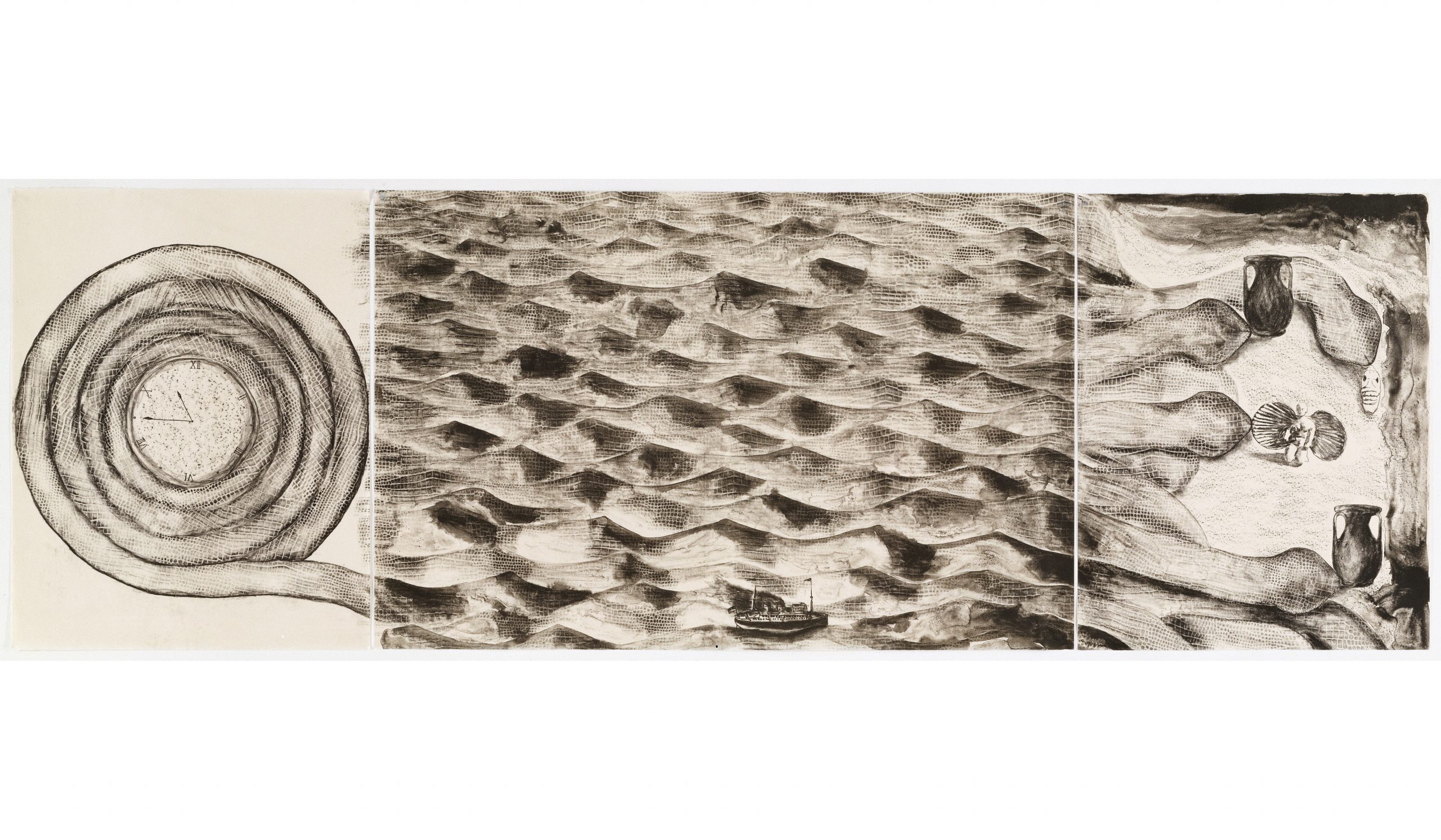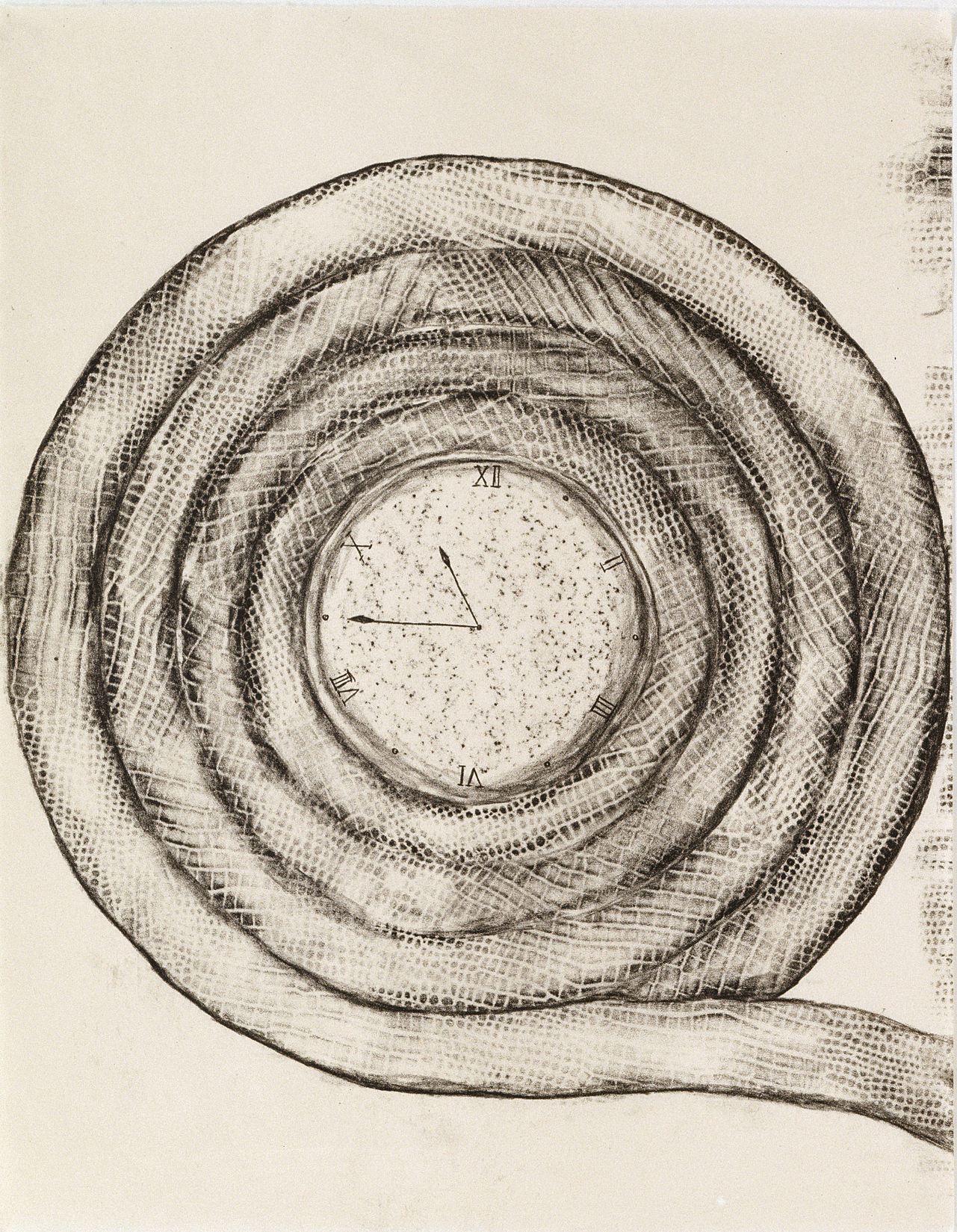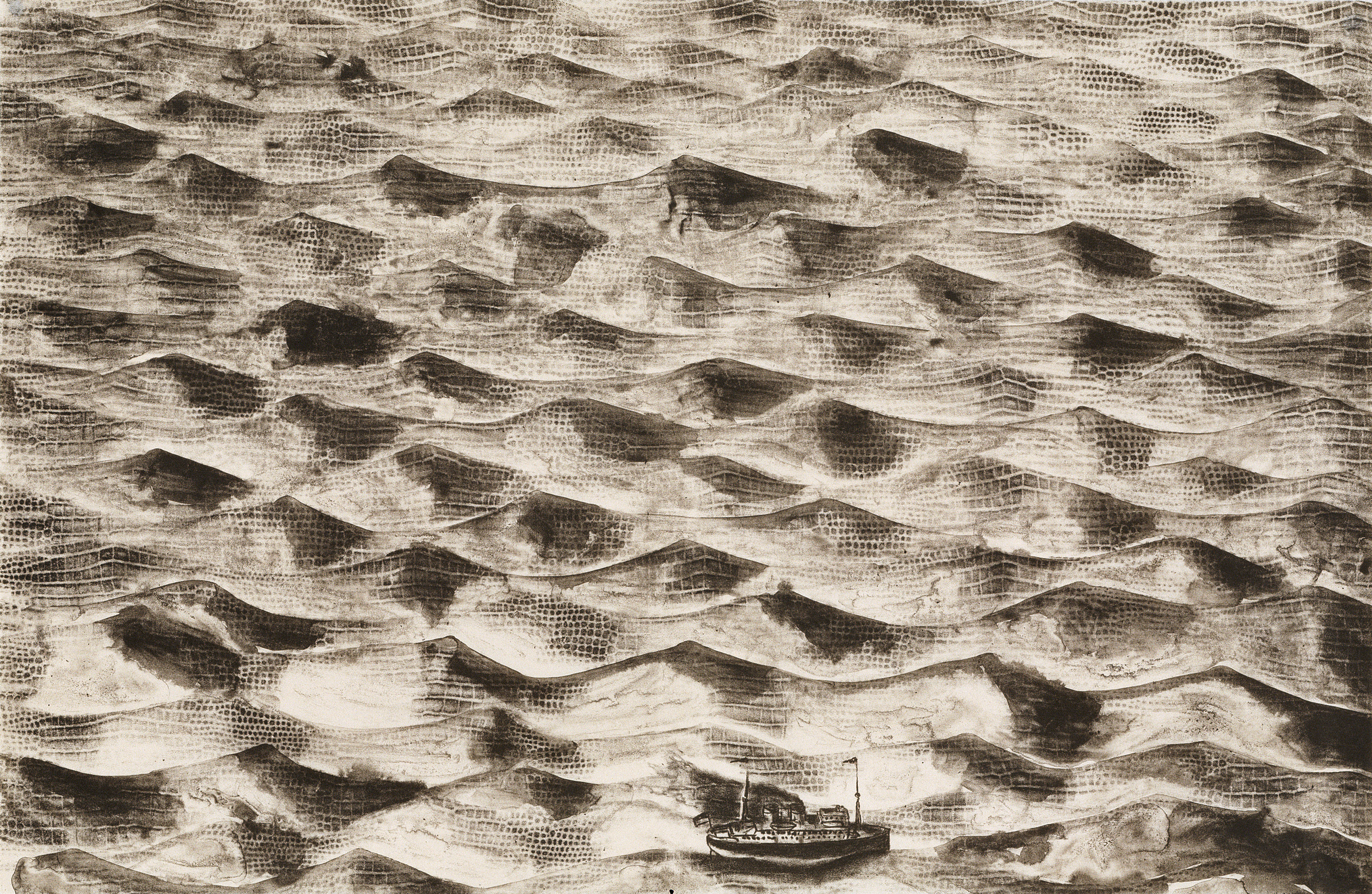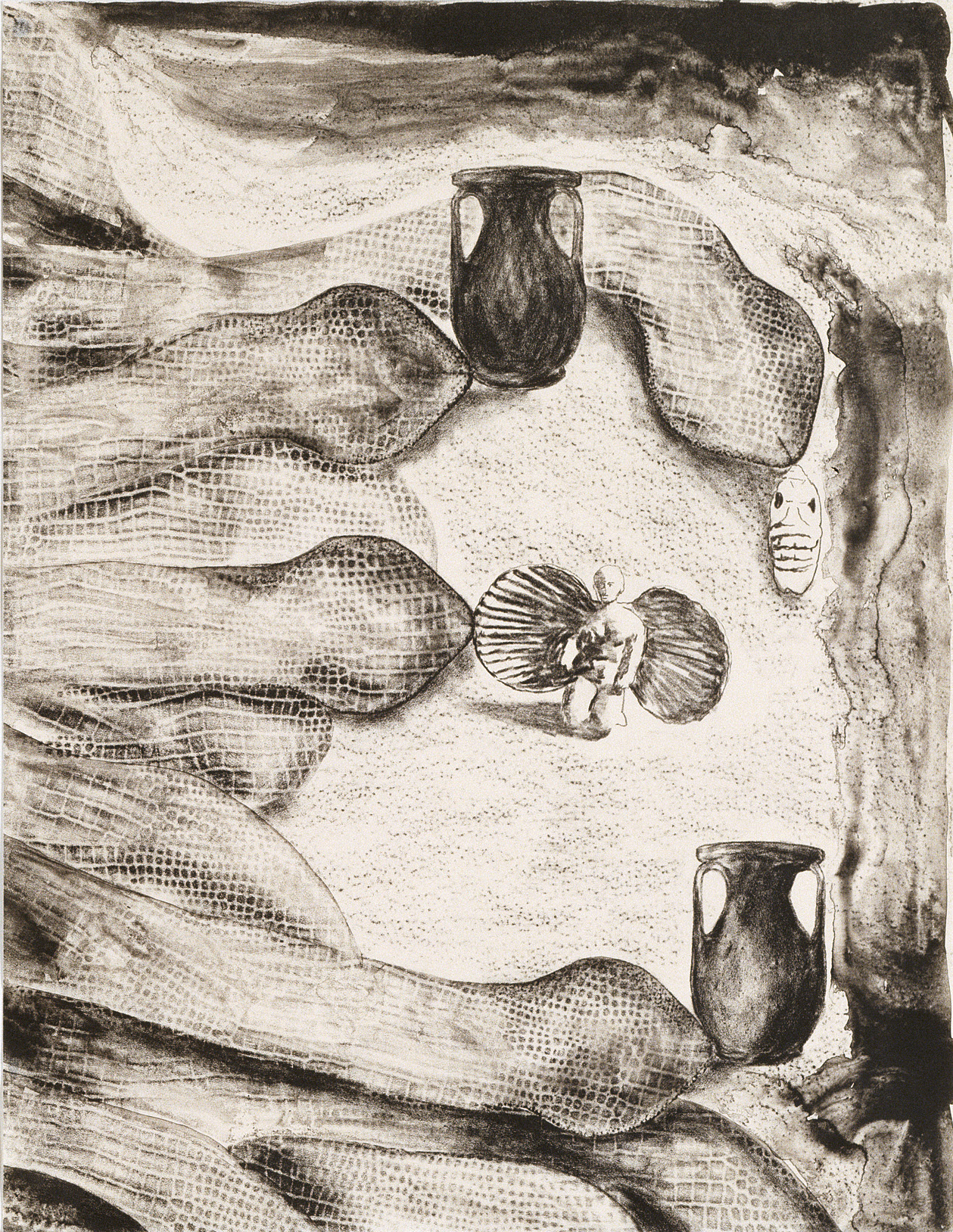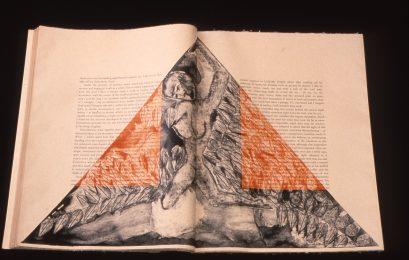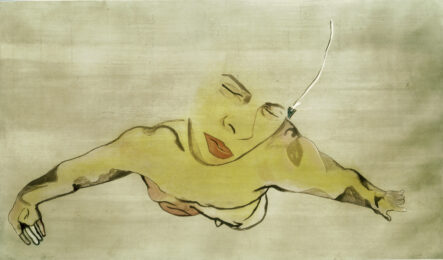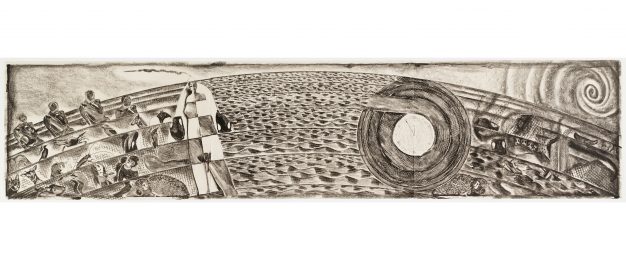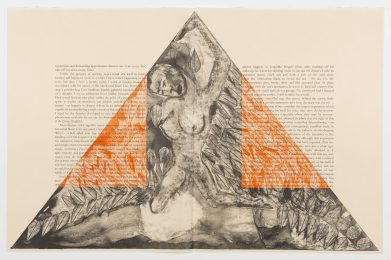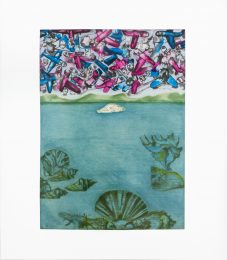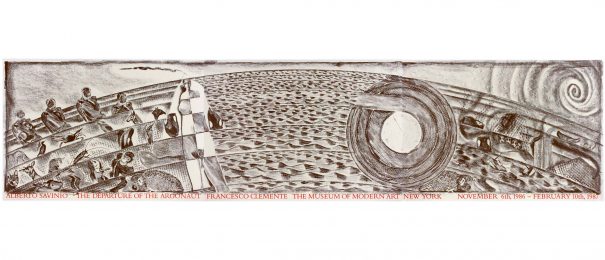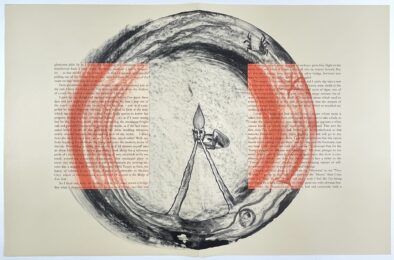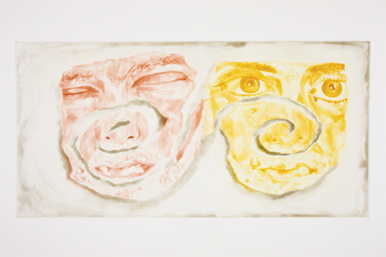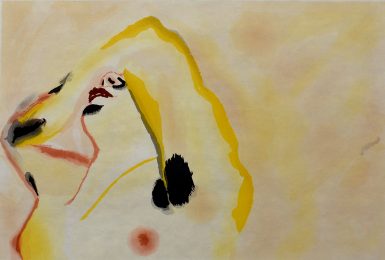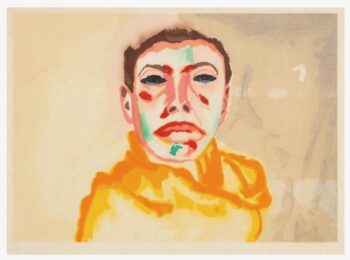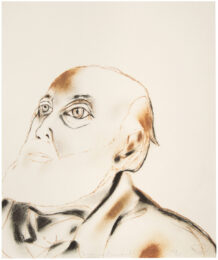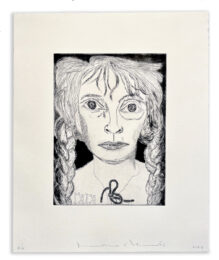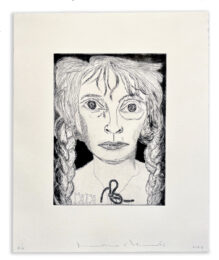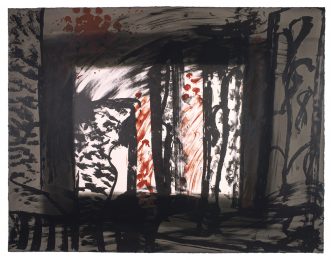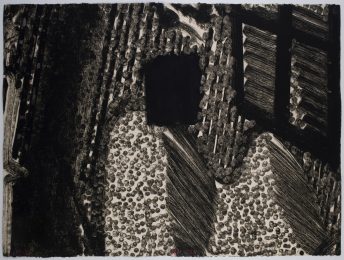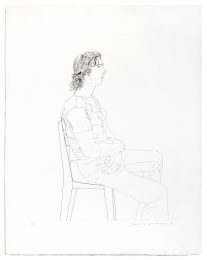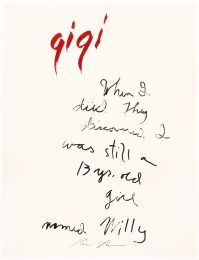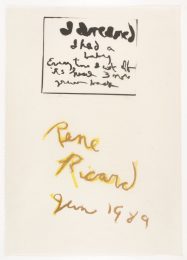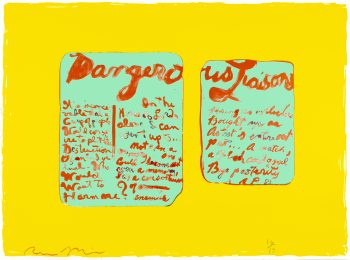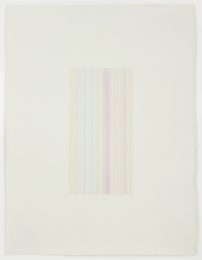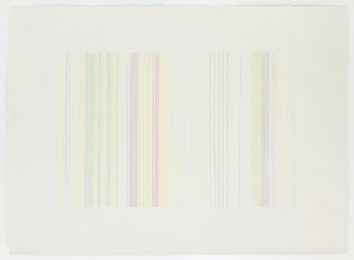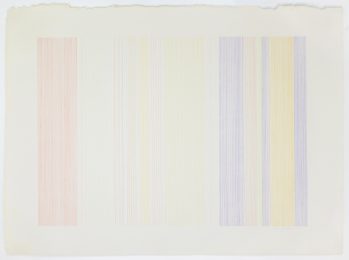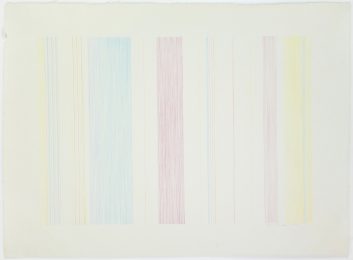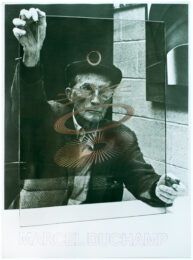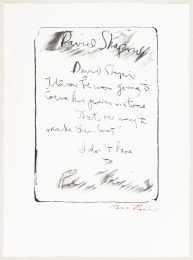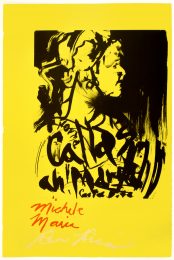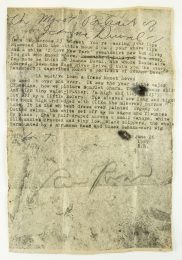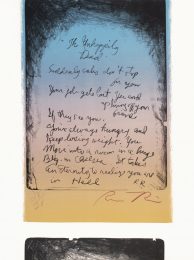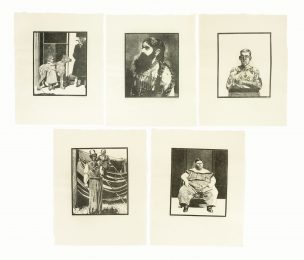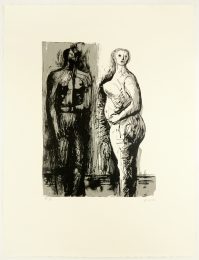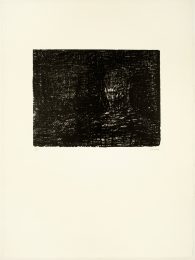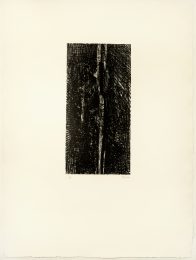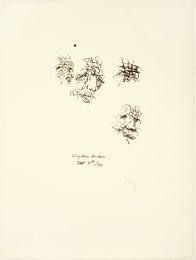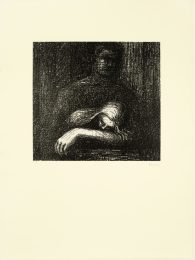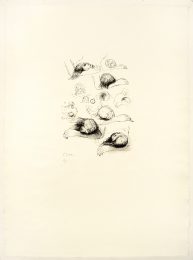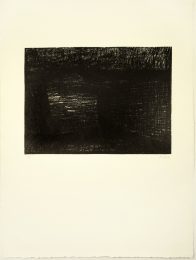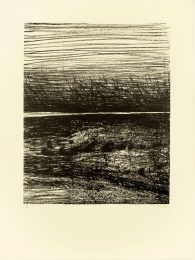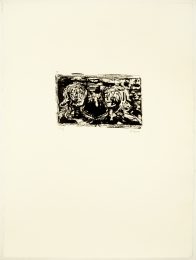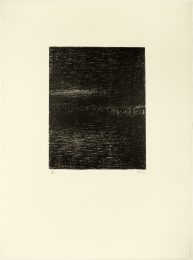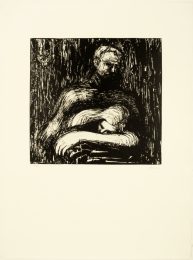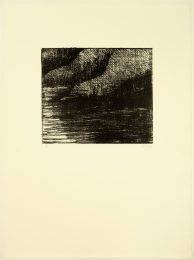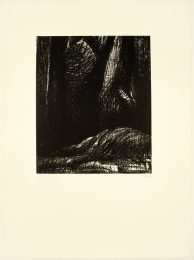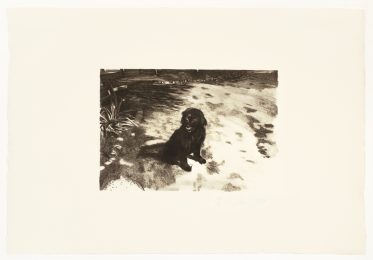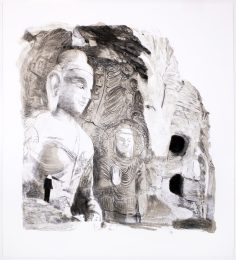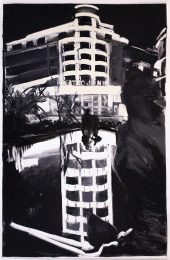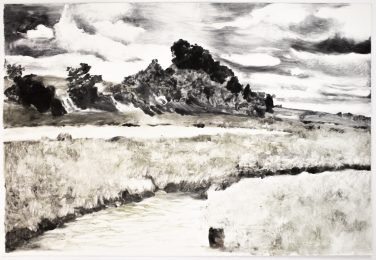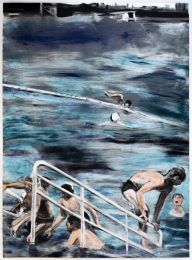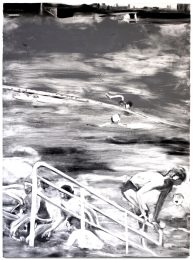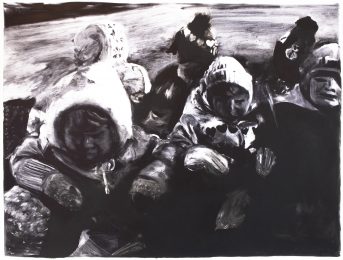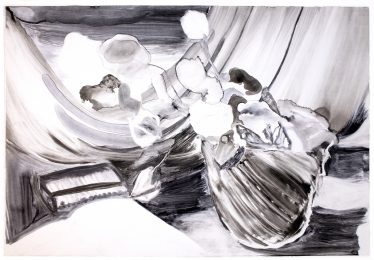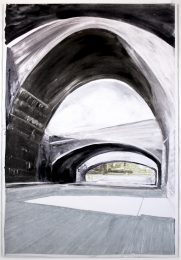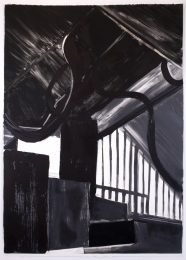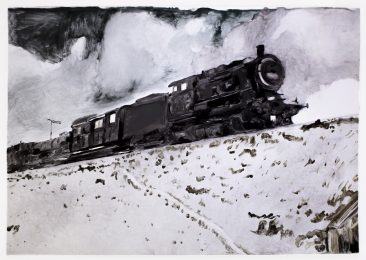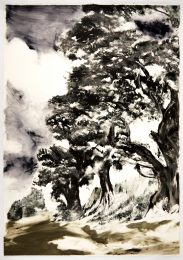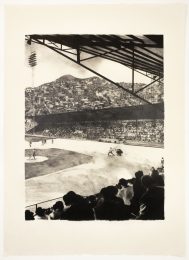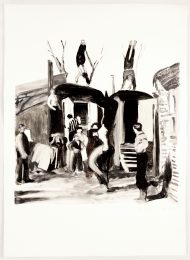Details — Click to read
Lithograph in three panels on buff mould made Okawara (Kozo) paper. Edition 100: this impression 100/100. Signed and numbered by the artist. Published by Petersburg Press.
Clemente drew this lithograph while working on his large scale deluxe book “The Departure of the Argonaut”, both of which were exhibited on publication at MoMA, New York in 1986. “The Departure of the Argonaut” includes 49 original lithographs overlaying the text of Alberto Savinio (the brother of Giorgio de Chirico). In both “Untitled B” and “The Departure of the Argonaut” Clemente’s surreal, mythological imagery, draws on themes of mortality, eternity, sexuality, and the fluidiity of life.
This epic, three-part print portrays a surreal scene stretching across the paper. To the left, animals sit in row: a chimpanzee, crab, lemur, tapir, cockroach, and other species sit happily side-by-side, as if lined up for Noah’s ark. Four figures stand above them in a row, assuming the pose of Rodin’s The Thinker. To the right, a bisected nude female figure is flanked by urns. A snake-print ocean divided into long strips stretches across the middle of the print, its waves transforming into the body of a coiled snake. The clock, wrapped tightly by the snake, reads 11:55. A shrew hides beneath the snake. The ocean’s stripes turn into a storm of capsized boats and urns: smoke rises from the striations, curling into dots and letters that curl into a spiral vortex.
Fluid brushstrokes and airy, sketched marks capture the movement of the ocean, its waves marking the passage of time. Capsized ships imply the inevitable end of life. Clemente contrasts the traditional Memento Mori imagery of a clock, marking the mortality of man, with the snake, a symbol of renewal and rebirth. Here, the clock reads 10:45, while in this work’s companion piece, Untitled A, the clock has almost struck midnight. A nude woman displays male genitalia, containing the means for human reproduction in just one body. The promise of renewal in Noah’s ark is dashed on the waves with the Grecian urns.
John Keats’ poem “Ode to a Grecian Urn” describes the urn’s beauty as eternal, yet lacking the vitality and warmth of life itself, and ultimately serving as a reminder of the brevity of existence. The urns can be seen, too, as the ephemeral vessel of the human body, broken in the waves. And while Clemente’s broken urns and boats suggest the inevitable end of things, the curved lines and spirals of Untitled promise the possibility of renewal.
A prodigious producer of paintings, drawing, and prints, Clemente frequently depicts the nude human form, including intimate self-portraits and couples in erotic embrace. Clemente’s visual language combines art-historical reference and ancient mythology with images of nature, imbuing figurative scenes with a dreamy spirituality. Sex, violence, death and birth provide equal inspiration for Clemente’s nomadic soul-searching.
This lithograph is in the collection of Tate, London; Des Moines Art Centre, Des Moines and the National Gallery of Australia, Canberra amongst others.

